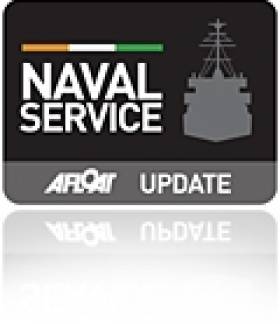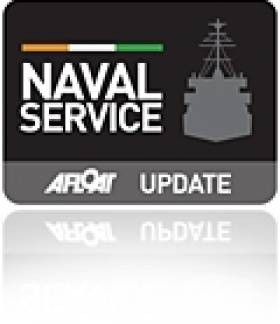Displaying items by tag: LE Emer (P21)
L.E. Emer Heads Upriver of the Lee for Decommissioning Ceremony
#FarewellEMER – As previously reported, L.E. Emer (P21) of the Irish Naval Service which spent a career spanning more than 35 years, was decommissioned at a ceremony held in Cork City Quays today, writes Jehan Ashmore.
The oldest vessel in the service, the 1978 built LE Emer was the first of a trio launched from Verolme Cork Dockyard (V.C.D) from where she was commissioned on 16 January of that same year.
Notable highlights of her career include the following:
• First Naval Service vessel to carry out UNIFIL re-supply mission in 1979 to South Lebanon.
• Participated in the search and rescue (SAR) operation during the Fastnet Race disaster off the West Cork coast in 1979.
• She played a key role in the seizure of the gun-running fishing vessel "Marita Anne" in 1984.
The 'Emer' CPV class vessel (later reclassified in recent years as an OPV) was designed as an improved version of the CPV L.E. Deirdre(P20).
L.E. Deirdre played a significant historic milestone in that she represented the state's first custom-built naval vessel and which too was launched in 1972 by V.C.D. at the Rushbrooke shipyard near Cobh. She was decommissioned in 2001 and sold for €190,000 and converted into a luxury yacht.
On her final return to Cork Harbour yesterday, L.E. Emer had completed on what would be her last patrol when she berthed along the quay at the foot the Naval Service Base control tower on Haulbowline Island.
L.E. Emer was under the command of captain Lieutenant Commander Alan O'Regan, a Cork native who became the last of 23 captains that have taken charge of the vessel spanning more than three decades.
This afternoon L.E. Emer made the short passage from Haulbowline to Cork City at Customs House Quay North, which en-route involved the 1,019.5 displacement tonnes vessel navigating through Lough Mahon.
Next month she will be put up for sale at a public auction.
Tonight's edition of 'Seacapes' has an interview with Commodore Mark Mellett, Flag Officer Commanding of the Naval Service which includes reviewing the overall fleet. Alternatively you can hear the interview now as a podcast version in advance of the programme to be broadcast on RTÉ Radio 1 starting at 22.30hrs.
LE Emer to Decommission After 36 Years Naval Service
#FarewellEMER – Irish Naval Service vessel LE Emer (P21) is being decommissioned from the service today after almost 36 years in use.
The oldest vessel in the service, LE Emer was built in Verolme Cork Dockyard and was commissioned on January 16th, 1978. The vessel has had 23 captains and the service estimated it has sailed 518,000 nautical miles during its career.
The final serving captain is Lt Cmdr Alan O'Regan, a Cork native. For more on this story,The Irish Times reports.
Afloat.ie adds that the L.E. Emer completed her last stretch of her final patrol duties that saw her depart Dublin Port on Monday of this week. The OPV is currently moored alongside the outer quay of the Naval Service Base on Haulbowline Island.
As previously reported, an interview with Commodore Mark Mellett, Flag Officer Commanding of the Naval Service. To hear the interview click this link to the podcast version in advance of tonight's RTE Radio 1's 'Seascapes' programme starting at 22.30hrs.






























































